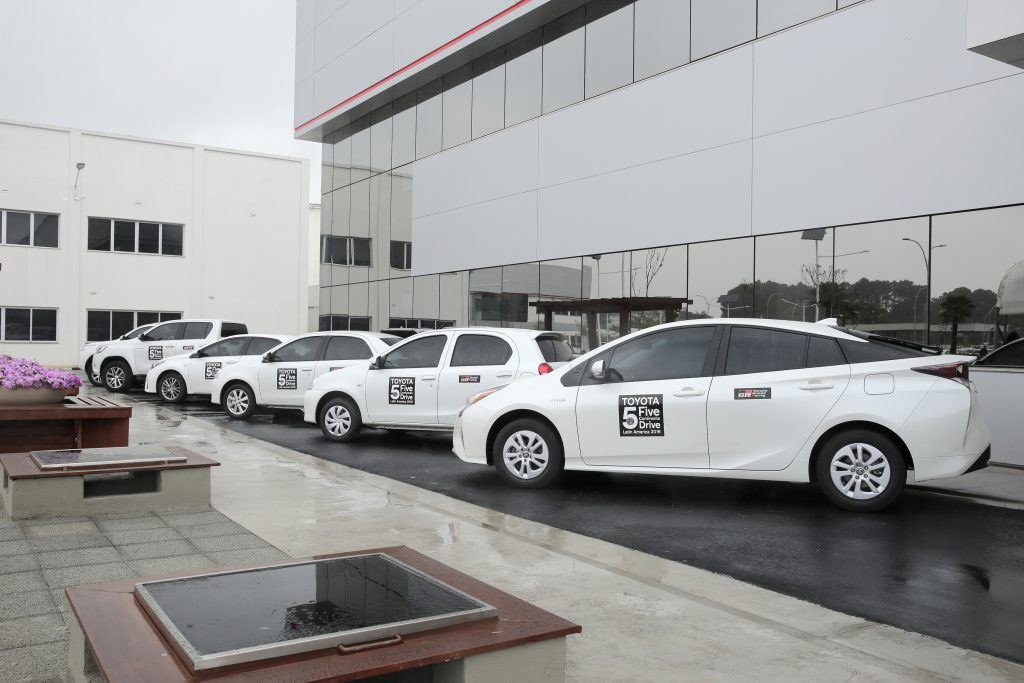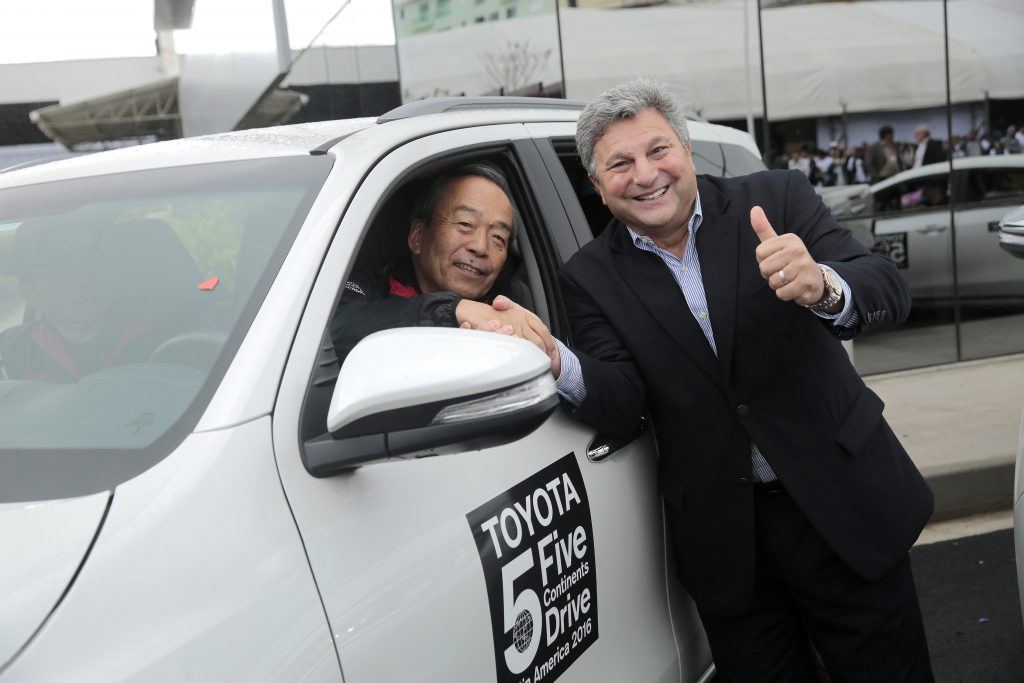Toyota kicked off the third leg of the Five Continents Driving Project in Latin America.
For the next three and a half months, Toyota’s employees hailing from Japan and the local affiliates will work closely together to take on a variety of severe driving conditions of the continent.
In this project, the employees will take on the steering wheel, and experience on site driving on the Latin American terrains, where they can better understand the conditions which our customers face every day. This is in line with the principle of genchi genbutsu, or hands-on knowledge of the situation on the ground. Hence, the project will be a platform through which we are able to train our personnel and hone our abilities for the making of ever-better cars.

Vehicles from the first leg for Latin America of the Toyota 5 Continents Drive in front of Toyota do Brazil’s R&D center.
Toyota conducted the first leg of the project in Australia in 2014. By taking on the continent’s diverse roads which cover approximately 20,000 kilometers of desert tracks and other tough terrain among others, a team of 80 Toyota employees who had participated were able to gain critical insight where they were able to understand, and gather essential observations for the making of cars, which cannot be derived simply from driving cars on test courses.
In 2015, another team consisting of around 140 Toyota employees tackled a variety of terrains totaling approximately 28,000 kilometers across North America. The team, which was divided into two seasons; summer and winter, had learnt what cars needed in order to operate under severe opposing driving conditions, such as through the relentless heat of the Death Valley, to the unforgiving arctic climes of Alaska and Canada.
This year, for the third leg of the Five Continents Driving Project, Toyota employees will be divided into three teams to complete approximately 20,000 kilometers in total distance. By crossing the borders of seven countries, and through experiencing the diverse cultures and climates, the team will take on a variety of severe driving conditions of the continent, including muddy roads in the tropics, mountainous roads at an altitude of over 4000 meters, and highways affected by strong crosswinds. The vehicles participating will also be driven across dunes and wadis (dried-up streams), which are located along the driving course of the Dakar Rally. The Dakar Rally has been regarded as one of the world’s most severe within the realm of motorsports, and by driving through such harsh conditions, it would help to further hone the abilities of our personnel for the making of ever-better cars.
Toyota President Akio Toyoda said:
“By taking on the steering wheel on their own, the participants will be able to interact with, and gain on-site experiences from driving on a variety of roads, and what they feel and think will be the insights for making ever-better cars. This Latin American leg is where the participating vehicles and drivers will encounter many challenges in the different countries, not just from the varying road conditions, but also, that they will face changes in temperatures and altitudes. I expect that the team members will be able to hone their intuition through overcoming such various difficult situations.”
Toyota positions motorsports as a crucial means of conveying the dreams and the excitement which automobiles are able to provide. By conducting related activities under the umbrella of Toyota GAZOO Racing, Toyota is making consistent efforts to develop its people, improve its products, and encourage a greater following of car fans and enthusiasts.

From left to right: Takeshi Uchiyamada, Chairman of the Board of Toyota Motor Corporation, and Steve St. Angelo, CEO for Latin America and the Caribbean for Toyota Motor Corporation.
Since 2007, as part of Toyota GAZOO Racing, Toyota employees have competed in the 24 Hours of Nürburgring, an endurance race that is held annually in Germany. It is at Nürburgring that as cars are placed under extreme situations, Toyota has been able to train its employees. In April 2015, Toyota consolidated all of its motorsport activities under Toyota GAZOO Racing in the hopes of inheriting Toyota’s foundational philosophy of human development through motorsport.
For Toyota GAZOO Racing, the Five Continents Driving Project is directed toward the development of personnel – one of the important pillars in motorsports. Toyota will continue the project, in tandem with 340,000 global Toyota employees, to strive towards the united goal of making customers smile through the making of ever-better cars. The year 2020, when the Tokyo Olympic Games will be held, has been identified as the target year for the completion of the projects.
Duration: Around three and half months, starting August 22 (Monday)
Route: Approximately 20,000 kilometers in total across the following countries:
Team 1: Brazil and Paraguay (August 22 through mid-September)
Team 2: Chile, Peru, and Bolivia (late-September through late-October)
Team 3: Argentina and Uruguay (early-November through early-December)
Vehicles involved: Nine models, including the locally-produced such as Hilux, SW4 (Fortuner), and Etios, for each team
Employees: Approximately 110 consisting of employees from Toyota Motor Corporation and local affiliates